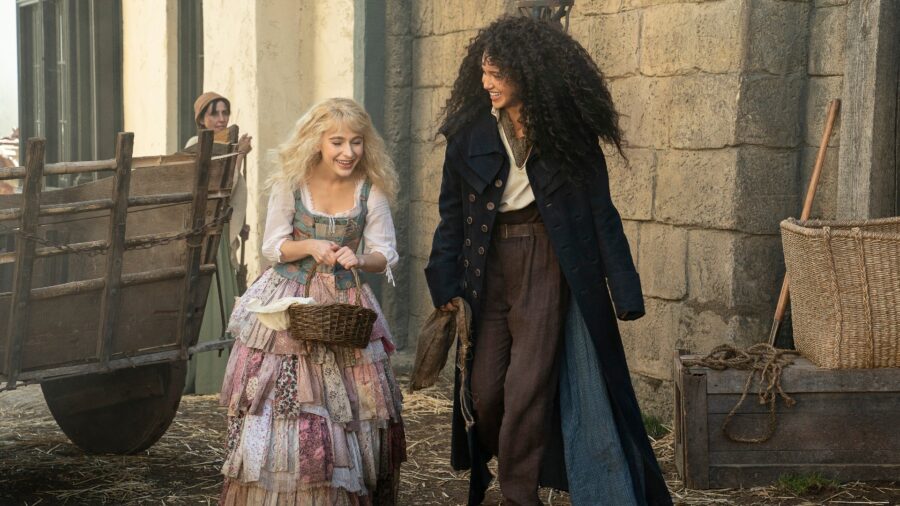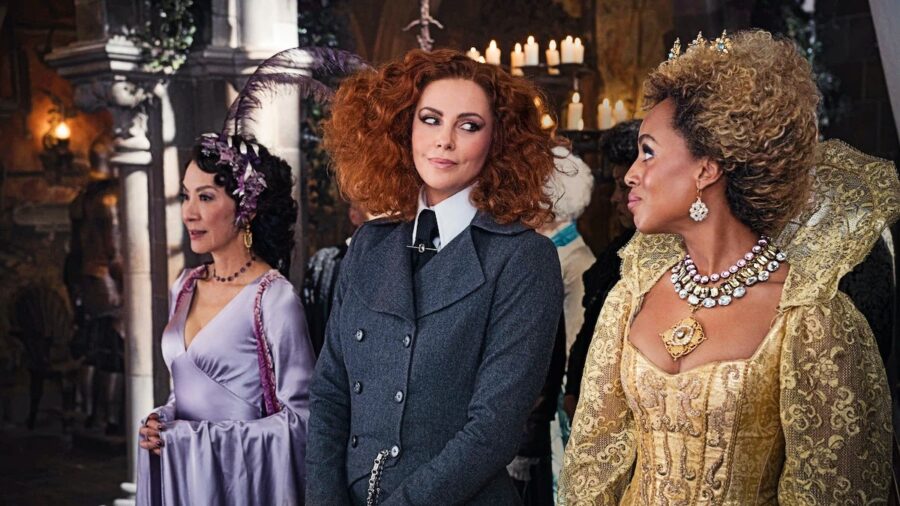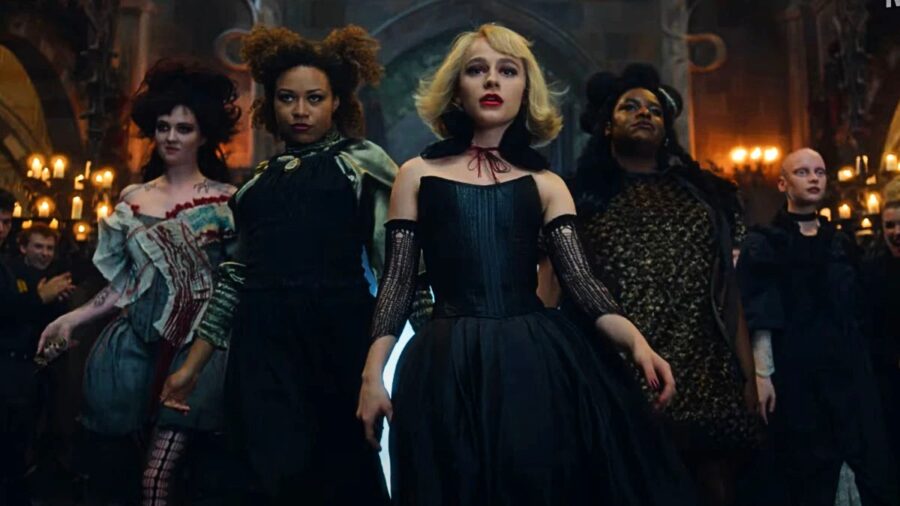The School For Good And Evil Review: Impossible Not To Compare To Harry Potter, But Still Funny
The School for Good and Evil unavoidably exists in the shadow of Harry Potter, but it still has some high points of its own.
This article is more than 2 years old

The School Of Good And Evil Review Score:
Like any young adult fantasy story, The School for Good and Evil unavoidably exists in the shadow of Harry Potter. While any story involving talented and special youths on adventures will be compared to JK Rowling’s series of books and their film adaptations, the new Netflix movie The School for Good and Evil doubles down by being set almost entirely set in a magical education facility with a distinctly medieval vibe, competing groups of students who are sorted immediately upon entry, and quirky professorial types. While The School for Good and Evil does not ever reach the heights of the best entries of Harry Potter, it mostly succeeds on its own, admittedly derivative merits.

The School for Good and Evil stars Sophia Anne Caruso and Sofia Wylie, two best friends in the village of Gavaldon who stand out from their peers by dint of seeming, well, kind of magical. While Sophie (Caruso) has the typical qualities associated with Disney princesses (such as chumming around with small, cute woodland creatures), Agatha (Wylie) has more of a dark, witchy vibe. However, when both are kidnapped and brought to the titular School for Good and Evil, Sophie is sorted into the Evil half of the school, which is overseen by Lady Leonora Lesso (Charlize Theron in a wild red wig), and Agatha is delivered to the Good half, administered by Prof. Clarissa Dovey (Kerry Washington).
So far, so good: The School for Good and Evil takes the existing trope of an academy full of hormonal, magically empowered teens and mixes it up by pulling a switcheroo on its leads. The School Master (an underused Laurence Fishburne) insists that there has been no mistake in assigning Agatha to Good and Sophie to Evil, and the pair find themselves facing off against hostile mean girl cliques from both sides of the school.

On the plus side, The School for Good and Evil dives right into some intriguing concepts pretty much immediately. Although much is made of the “Evers” being wholly noble and heroic, with King Arthur’s son Tedros being the school’s resident hunk, and the “Nevers” being the villains of fairytales (the Sheriff of Nottingham’s daughter goes here), it becomes quickly apparent that neither side has a monopoly on pettiness, cruelty, and arrogance. Students who fail their exams get turned into magical fish for centuries, and that’s just from the good guys.
The School for Good and Evil is more interested in delving into relative morality than you might expect from a YA fantasy film, but it unfortunately does not get a lot deeper than proclaiming empathy to be the strongest magic of all. The movie was directed by Paul Feig (from a 2013 novel by Soman Chainani), who brings the comedic touches regularly: one particularly hilarious example sees a group of Nevers threatening their Good counterparts, only to get creeped out themselves when one of their own group blithely suggests cannibalism.
The film also consistently looks fantastic, with the Good side displaying an over-the-top frilly, rococo aesthetic that matches Kerry Washington’s teeth-clenching cheerfulness, while the Evil side luxuriates in a dark gothic style embodied by Charlize Theron’s sardonic, casual badness. Reportedly, Paul Feig is not a fan of the green-screen technique that dominates the Marvel universe, so most of the actual school itself is constructed sets, which is a nice change from most modern, visuals-heavy movies.
Perhaps the biggest question raised by The School for Good and Evil is simple: why is this a movie? The film is a shockingly long 147 minutes, which is a pretty big time investment for a YA film. On the other hand, it could have been easily divided into five to six short episodes for a single season of a fantasy series adaption, which Netflix has had great success with Henry Cavill’s The Witcher.

At times, it actually almost feels like The School for Good and Evil was designed to be the first season of a show, with clear dramatic moments (a tense magical battle involving bees and a tiny dragon, for example, or an extended scene in which Sophie embraces being a cool evil girl and struts to a Billie Eilish song) that could have capped an episode. Considering that the novel source material has five sequels, it is a little bewildering that Netflix chose to tell this story as a film rather than the first season of a series.
On the other hand, The School for Good and Evil definitely finishes on a note that indicates Netflix hopes to make this YA fantasy a series of films. The movie might be difficult not to compare to Harry Potter, but it definitely has a fighting chance to build its own small franchise.











